IMPLANTS TOO CLOSE TOGETHER
Restoring implants with CEREC technology is now quite common and just about everyone in the cerecdoctors.com community is quite adept at handling the parameters. I've been placing implants for 5 years and restoring them for much longer. Other than the occasional odd case with aesthetic difficulties, I've never been stumped with anything bizarre--until recently.
I recently placed two implants on my assistant, Nadine, for sites #2 and #31 (see pictures #1 and #2). The upper was placed first, while the lower site was healing after I asked my oral surgeon to build up the ridge. I then placed the lower implant just like the upper, scanning first in CEREC, designing a final crown into proper alignment and occlusion, integrating into the SIDEXIS 4 software, and making CEREC Guides 2's. The implants were placed with ease.


Pictures #1 & 2
After appropriate healing, I placed scan posts/scan bodies on both implants to restore them. I designed the respective crowns and got bizarre proposals, because the implants were too close together in centric occlusion. Just to verify, I placed tibases on each implant, and sure enough my patient was unable to close her mouth all the way. Realizing that I needed to study this on models, I took PVS impressions and poured models. I placed the tibases onto the analogs, and sure enough, I was screwed (see picture #3). What to do?
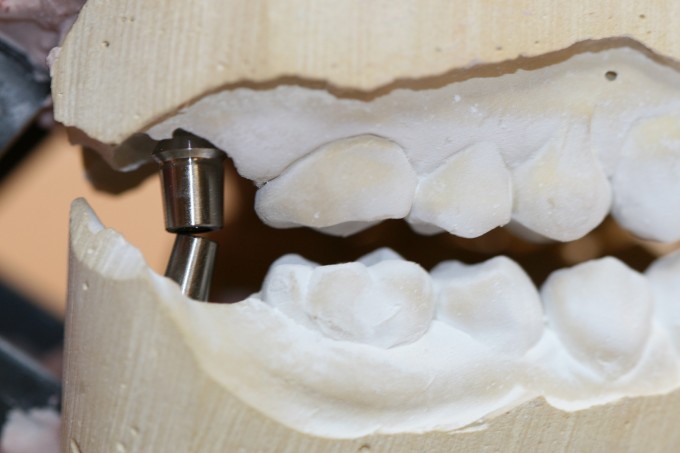
Pictures #3
After much head scratching, I realized I could figure this out. The restorations were going to be screw-retained anyway, so what's wrong with having the tibases occlude with each other (protruding right out the occlusal access holes) after I reduce them? Well, before doing this, I realized that I would have to reduce them too much. There would be very little left to lute to the crowns.
So then I thought, how about using stock abutments? Although I would still have to reduce them a lot occlusally, I would have wider abutments to gain some ferrule with the crowns. Brilliant! I had a Guinness to celebrate (see picture #4). However, they were still too short. But then I noticed that the two stock abutments had 2 mm tall aprons apical to their margins. Aha! A quick call to Implant Direct to order two more abutments with only 1 mm tall aprons solved the problem (picture #5).
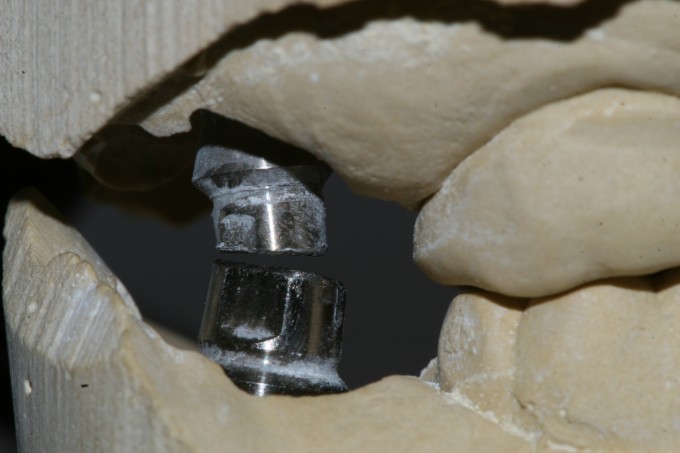
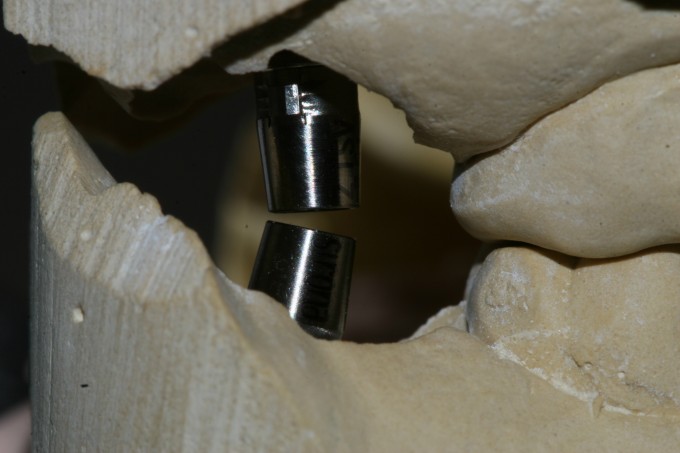
Pictures #4 & 5
Now I had decent looking abutments to scan directly in CEREC. I knew the crowns would be short and would require lots of manipulation to get them to look decent, but it worked. I milled the crowns and had to carve out some residual ceramic in the centers for screw access to get things to fit together. I made sure to preserve the flat planes in the crowns that fit against the corresponding flat planes on the abutments. I adjusted occlusion in the blue phase on the models. Picture #6 shows the crowns at this stage. Pictures #7 and 8 show the restorations in the mouth after I luted with Ivoclar Multilink Hybrid Abutment Material. All that remained was sealing the access holes just like we do for all other restorations. In this case some metal is exposed.
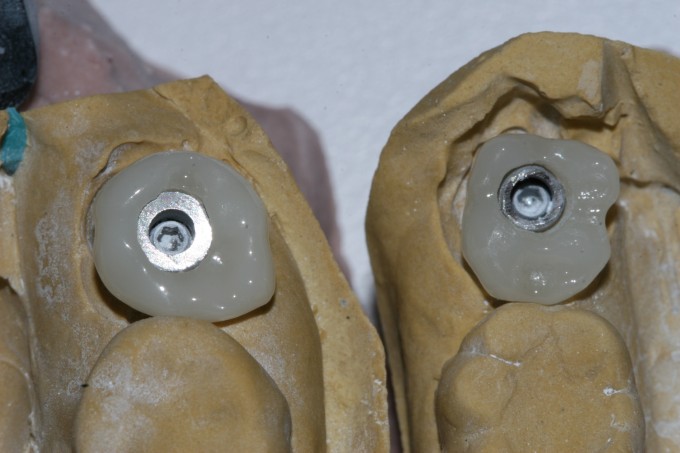
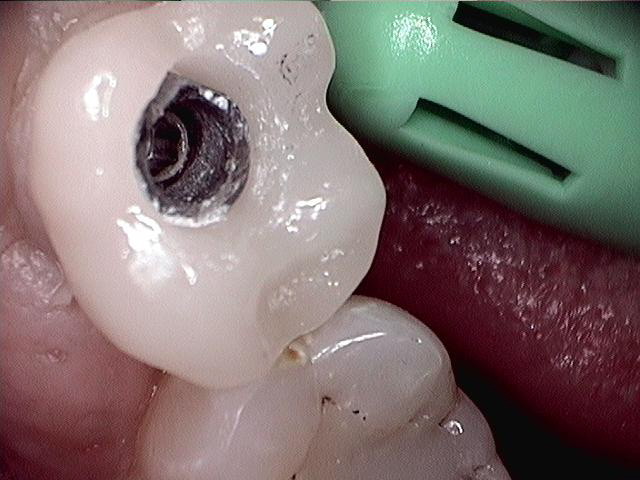
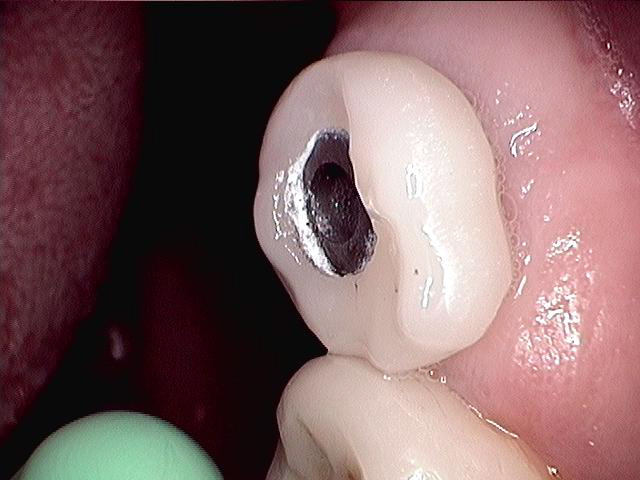
Pictures #6-8
Picture #9 shows a bitewing of the final restorations. They've been in the mouth for just two weeks. I was still able to get some teflon tape into the small spaces above the screws. The final two pictures shows the final restorations in the mouth.
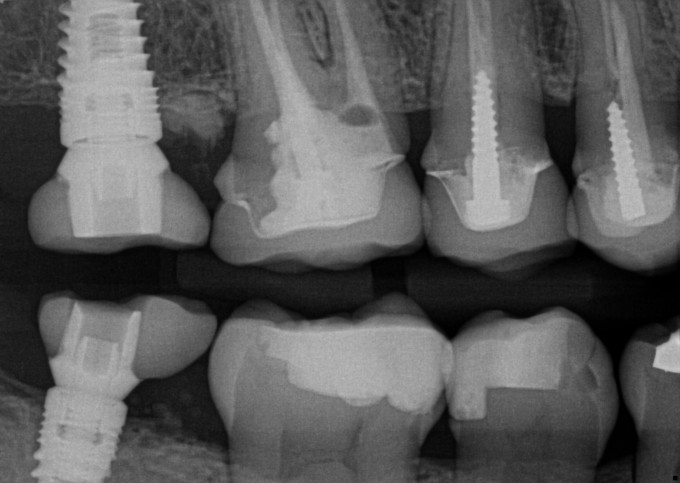
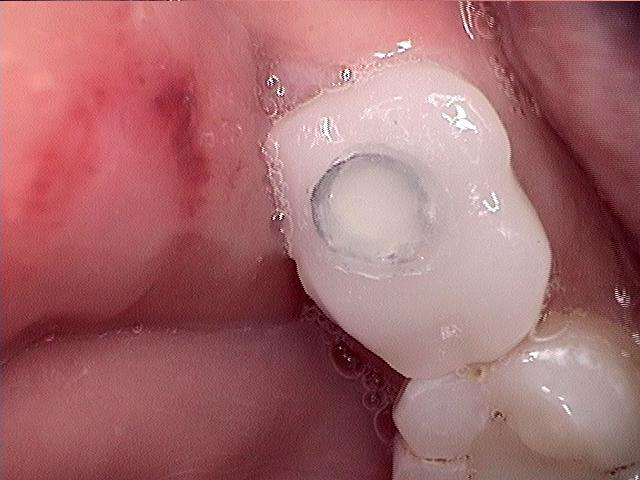

Pictures #9-11
Could I have avoided this problem? Yes. Before placing the second implant (#31), careful analysis of my inter-occlusal distance would have alerted me to trouble. My oral surgeon did too good of a job building up the lower ridge. You can see that my lower implant is rather small and short. I could have reduced the bone, placing a longer and deeper implant. Just 2 more mm would have avoided the problem.
I almost went for help to c-docs for this, but I knew I could figure it out on my own. Another problem solved with our great technology with CEREC.
 Eric Prouty
Eric Prouty